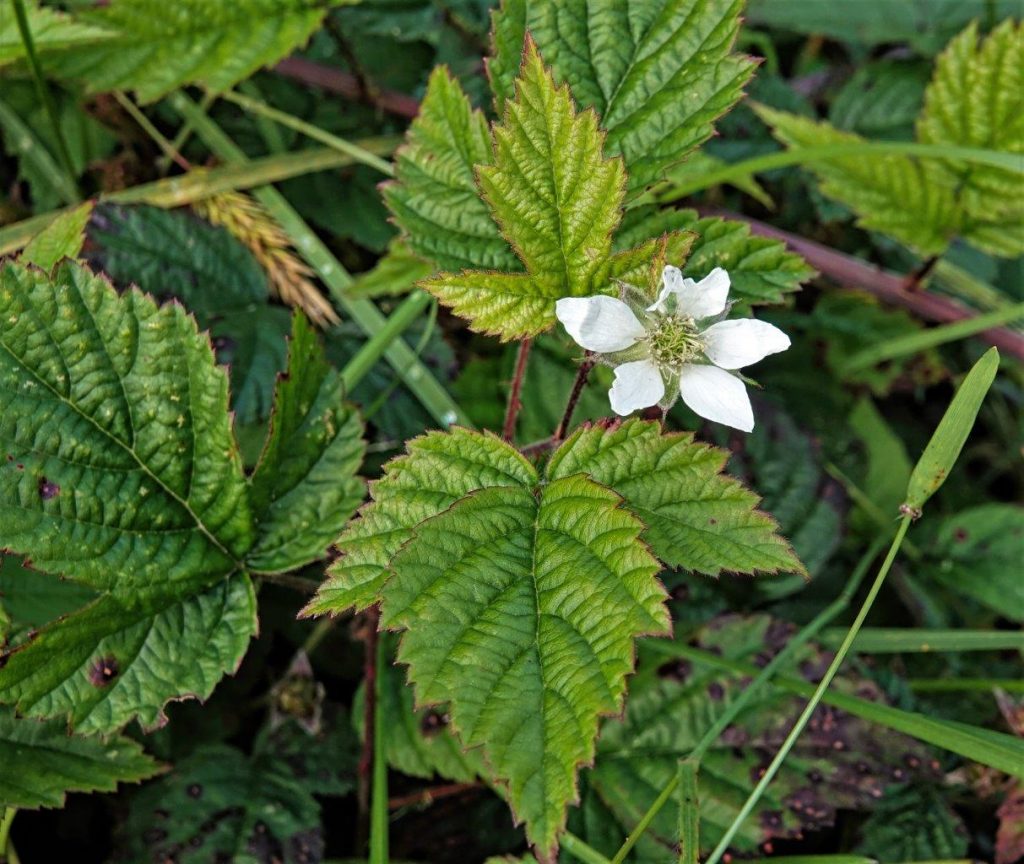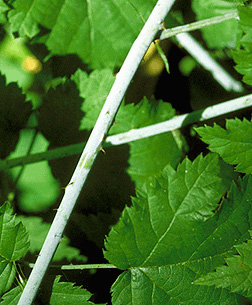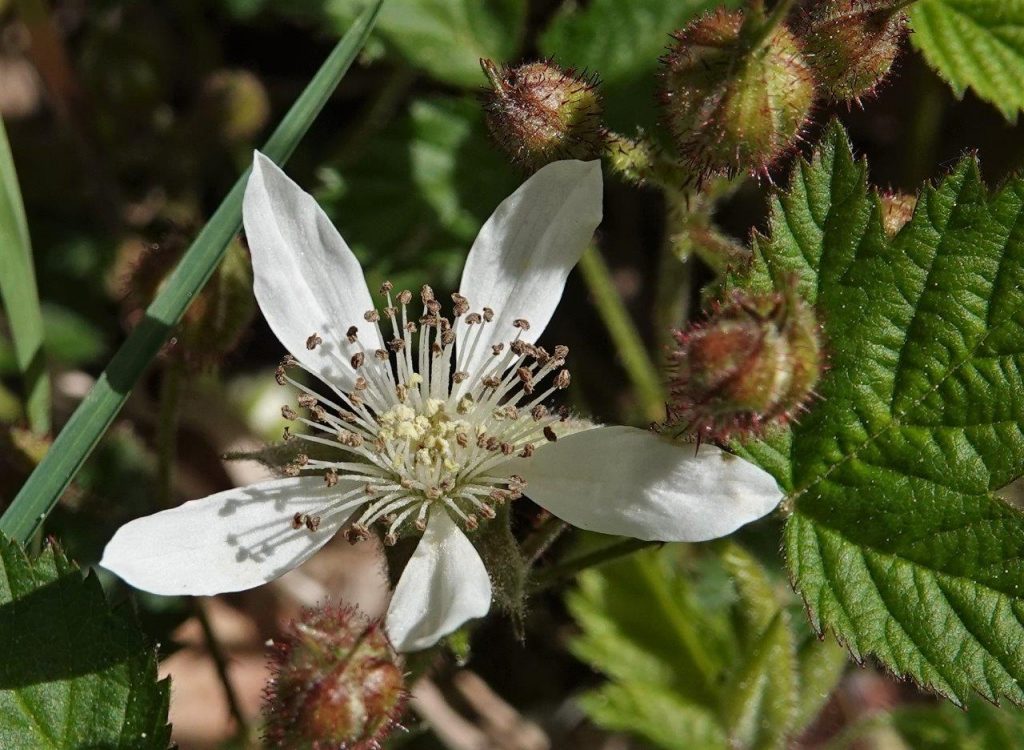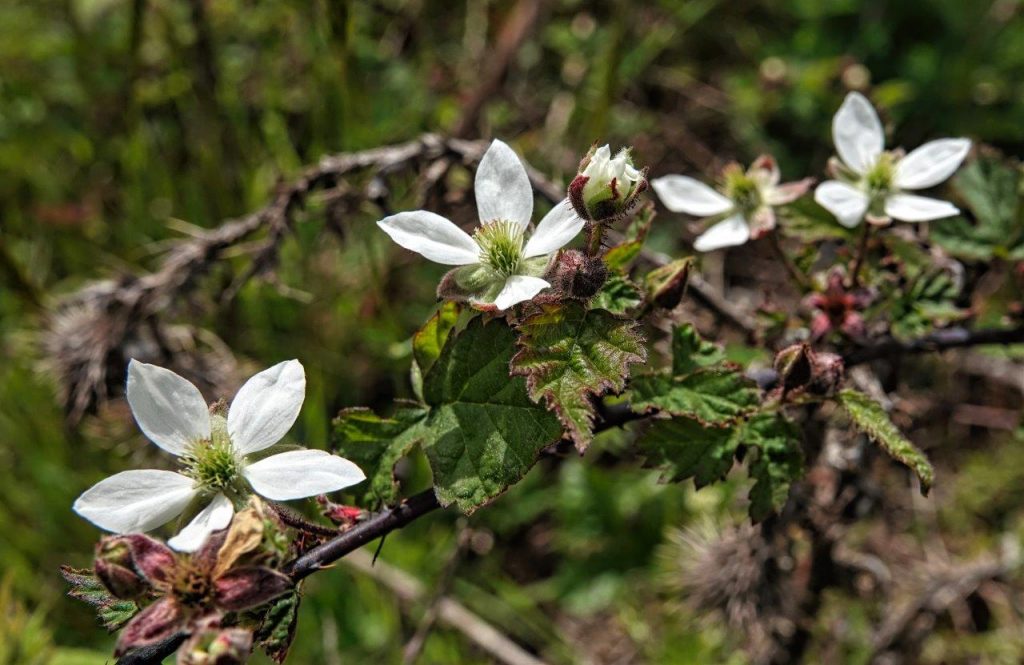Family: Rosaceae
Common name: Trailing blackberry
E-flora BC: https://linnet.geog.ubc.ca/Atlas/Atlas.aspx?sciname=Rubus%20ursinus
Wikipedia: https://en.wikipedia.org/wiki/Rubus_ursinus
Rubus ursinus, trailing blackberry, is sometimes called ‘the Devil’s shoelaces’ because its thin stems, trailing and arching slightly above the ground, tend to trip you as soon as you step off a walking trail. Like many other plants on our Botany list, trailing blackberry is quite adapted to a range of habitats. It grows most luxuriantly in lightly shaded sites with a bit of extra moisture, but it stays alive and spreads also in very dry, exposed sites. The species name ‘ursinus’ is derived from ‘urs / ours’ the word for bear. Bears probably enjoy the sweet flavourful berries of this plant as much as humans do – they are one of our best tasting berries.


As the common name suggests, the stems of trailing blackberry trail along the ground. They are quite slender, typically less than 1/2 inch in diameter, with fine, sharp prickles. The surface of the stem is usually covered in a fine layer of wax crystals that impart a greyish-green hue. Plants growing in very sunny spots can have reddish stems.


You may not see flowers, nor fruit, of the trailing blackberry when you look for them in the fall semester, but we’ll show you some images for your future reference. As members of the Rosaceae family, trailing blackberry flowers have five each of sepals and petals. Compare the images below to those of Rubus parviflorus (thimbleberry), Rubus bifrons (Himalayan blackberry) and Rosa nutkana (Nootka rose), you’ll see the resemblance in flower morphology.



The fruits of trailing blackberry are enjoyed by anyone who tastes them, and have been / are collected and eaten fresh or dried as food by First Nations people in our area. Vegetative parts of the plant were collected and processed into different types of medicine.
Sometimes people are unsure as to whether they’re looking at a trailing blackberry or Himalayan blackberry (Rubus bifrons). Try to count the number of leaflets and look at the overall stature of the plant. Most Himalayan blackberry leaves have five leaflets (except those on flower-bearing shoots), most trailing blackberry leaves have three leaflets. The Himalayan blackberry plant is robust and usually clambering over other vegetation, it has large, hard and sharp prickles that are wide at the base. Trailing blackberry have dense and sharp, but slender prickles. The stem of trailing blackberry is usually covered in a waxy layer that can be rubbed off.